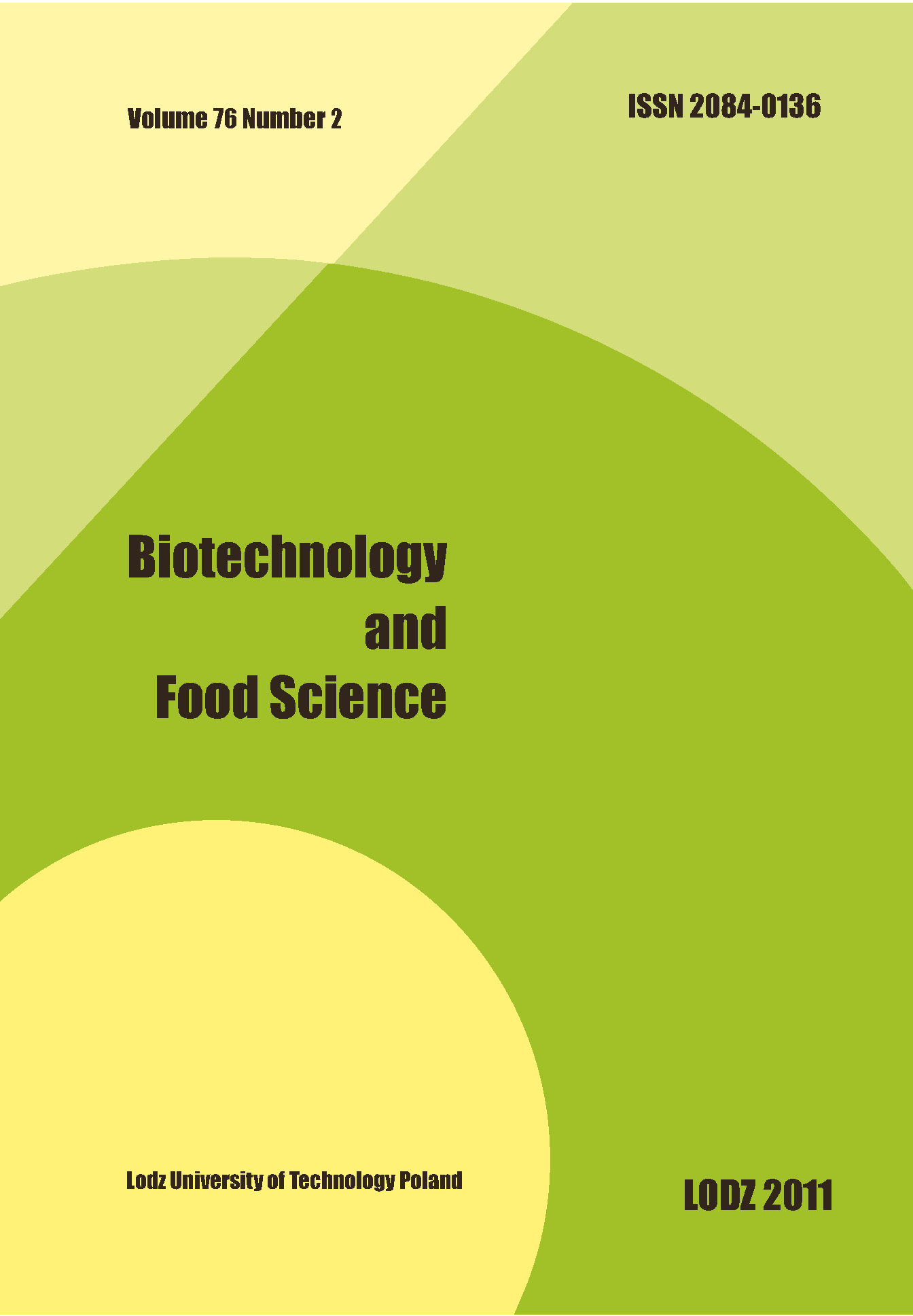Abstrakt
Nanotechnologia należy do nauk technologicznych, obejmujących otrzymywanie oraz wykorzystywanie nowych nanomateriałów, takich jak nanoceluloza. Nanowłókna celulozy można otrzymywać dwoma sposobami top-down oraz buttom-up. Obecnie stosuje się głównie pierwszą metodę, w której zawiera się obróbka mechaniczna, chemiczna oraz enzymatyczna. Najlepsze efekty daje kombinacja utleniania chemicznego połączona z rozdrobnieniem mechanicznym, która pozwala na otrzymanie włókien o średnicy kilku nanometrów. Najbardziej przyjazną środowisku oraz przyszłościową okazuje się hydroliza enzymatyczna, która nie wymaga dużych nakładów finansowych i nie powoduje powstawania substancji trudnych do utylizacji. Otrzymane nanowłókna posiadają wiele potencjalnych zastosowań ze względu na właściwości reologiczne, takie jak wysoki moduł Young’a i odporność na rozciąganie przy niskiej rozszerzalności cieplnej.
Bibliografia
FeynmanP.There's Plenty of Room at the Bottom (transkrypcja wykładu z dnia 29 grudnia 1959), http://www.zyvex.com/nanotech/feynman.html.
NanoWord Newsletter nr 1. http://www.nanoword.net/library/nwn/1.html.
Poole P, OwensJ.Introduction tonanotechnology.John Wiley &Sons2003.
Gianella A, Jarzyna A, Mani V, Ramachandran S, Calcagno C, Tang J, Kann B, DijkR, Thijssen VL, Griffioen W, Storm G, Fayad A, Mulder M.Multifunctional Nanoemulsion Platform for Imaging Guided Therapy Evaluated in Experimental Cancer.ACS Nano2011, 5:4422-4433.
Nano acceleration network.http://nanotechnology.espaces.com/nano_products.html.
Kelsall W, Hamley W,Geoghegan M.Nanoscale Science and Technology.John Wiley& Sons2005.
Kelsall W, Hamley W, Geoghegan M,Kurzydłowski K.Nanotechnologie, PWN, Warszawa2008.
Balzani V.Nanoscience and nanotechnology.Pure Appl Chem2008, 80:1631-1650.
Nano acceleration network.http://nanotechnology.espaces.com/nano_products.html.
European Commission Nanotechnology Research needs on nanoparticles.Proc workshop held in Brussels, 25-26.01.2005.
Schaefer K, Thomas H, Dalton P, Moeller M.Nano-fibres for filter materials. http://www.scribd.com/doc/30357529/Nano-Fibres-for-Filter-Materials.
Yamashita Y, Ko F, Miyake H, Higashiyama A.Establishment of nano fiber preparationtechnique for nanocomposite. 16th Int Conf Composite Materials 2007.
Fan Y, FukuzumiH, SaitoT, IsogaiA.Comparative characterization of aqueous dispersions and cast films of differentchitin nanowhiskers/nanofibers.Int JBiolMacromol2012, 50:69-76.
Watthanaphanit A, Supaphol P, Tamura H, Tokura S, Rujiravanit R.Fabrication, structure, and properties of chitin whisker-reinforced alginate nanocomposite fibers. J ApplPolymSci2008, 110:890-899.
Fan Y, Saito T, Isogai A.TEMPO-mediated oxidation of β-chitin toprepare individual nanofibrils.Carbohydr Polym2009, 77:832-838.
Fan Y, Saito T, Isogai A.Individual chitin nano-whiskers prepared from partially deacetylated α-chitin by fibril surface cationization.Carbohydr Polym2010, 79: 1046-1051.
Cardamone M, Martin J.Keratin coatings for wool: shrinkproofing and nanoparticle delivery.Macromol Symp 2008, 272:161-166.
Martin J, Cardamone M,Irwin L, Brown M.Keratin capped silver nanoparticles-synthesis and characterization of a nanomaterial with desirable handling properties.Colloids Surf B Biointerfaces 2011, 54-61.
Xing Z, Yuan J, Chae W, Kang I, Kim S.Keratin nanofibers as a biomaterial.IntConfNanotechnology and Biosensors,Singapore, 2011, 2:120-124.
Tonin C, Aluigi A, Varesano A, Vineis C.Keratin-based nanofibres, in: nanofibers.InTech 2010, 139-158.
Adomavičiūtė E, Milašius R, Žemaitaitis A, Bendoraitienė J, Leskovšek M, Demšar A.Methods of forming nanofibres from bicomponent PVA/Cationic starch solution. Fib Text EastEur2009, 17:29-33.
Ayse A.Biocomposites from wheat straw nanofibers: morphology, thermal and mechanical properties.Comp SciTechn2008,68:557-565.
FujisawaF, Okita Y, Fukuzumi H, Saito T, Isogai A.Preparation and characterization of TEMPO-oxidized cellulose nanofibril films with free carboxyl groups.Carbohyd Polym 2011, 84:579-583.
Isogai A, Saito T, Fukuzumi H.TEMPO-oxidized cellulose nanofibers. Nanoscale 2011, 3:71-85.
Iwamoto S, Kai W, Isogai T, Saito T, Isogai A, Iwata T.Comparison study of TEMPO-analogous compounds on oxidation efficiency of wood cellulose for preparation of cellulose nanofibrils. Polym Degrad Stabil 2010, 95:1394-1398.
Hayashi N, Kondo T, Ishihara M,Enzymatically produced nano-ordered short elements containing cellulose Ibcrystalline domains. Carbohyd Polym 2005, 61:191-197.
Khalil A, Bhat A,YusraI.Greencomposites from sustainable cellulose nanofibrils: A review.Carbohydr Polym 2011, 87:963-979.
Eichhorn S, Dufresne A.Review: current international research into cellulose nanofibresand nanocomposites. J. Mater. Sci. 2010, 45:1-33.
Siró I, Plackett D.Microfibrillatedcellulose and new nanocomposite materials: a review.Cellulose 2010, 17:459-494.
Cheng Q, Wang S, RialsT, Lee S.Physical and mechanical properties of polyvinyl alcohol and polypropylene composite materials reinforced with fibril aggregates isolated from regenerated cellulose fibers.Cellulose, 2007, 14:593-602.
Klemm D, Schumann D, Kramer F, Heßler N, Koth D, Sultanova B.Nanocellulose materials–different cellulose, different functionality. Macromol Symp2009, 280:60-71.

